If you’ve ever attempted to cook salmon and ended up with a dry, flavorless, or just plain sad fillet, you’re not alone. For such a seemingly simple fish, salmon has a knack for humbling even confident home cooks. It’s delicate yet hearty, rich yet clean—qualities that make it a dream on the plate but a potential disaster in the pan. The truth is, many of us are unknowingly committing a few common culinary crimes against salmon, turning what should be a beautiful, flaky centerpiece into a disappointing dinnertime letdown.
Maybe you’ve been thawing it the wrong way. Or perhaps you thought a sprinkle of salt was all it needed. From using the wrong cut to applying too much heat, the mistakes are often subtle—but the results are unmistakable. Instead of glistening, tender perfection, you end up with chalky textures, broken skin, or a strangely fishy flavor that ruins the entire experience.
But here’s the good news: salmon isn’t hard to master—it just demands respect. A little attention to detail can make all the difference between a mediocre meal and a restaurant-worthy plate of fish. Whether you’re roasting, grilling, searing, or poaching, knowing what not to do is just as important as nailing the recipe.
So if you’re tired of salmon that falls short of your expectations, it’s time to sharpen your skills. We’ve rounded up the top 10 mistakes people make when cooking salmon—and how to avoid them—so you can serve it confidently every time. From prepping and seasoning to heat control and resting, we’re covering it all. Ready to transform your salmon game? Let’s dive into the pitfalls and quick fixes that’ll have you cooking this gorgeous fish like a pro. Because perfect salmon isn’t a myth—it’s just a few smart choices away.
1. Choosing Low-Quality or Mismatched Cuts
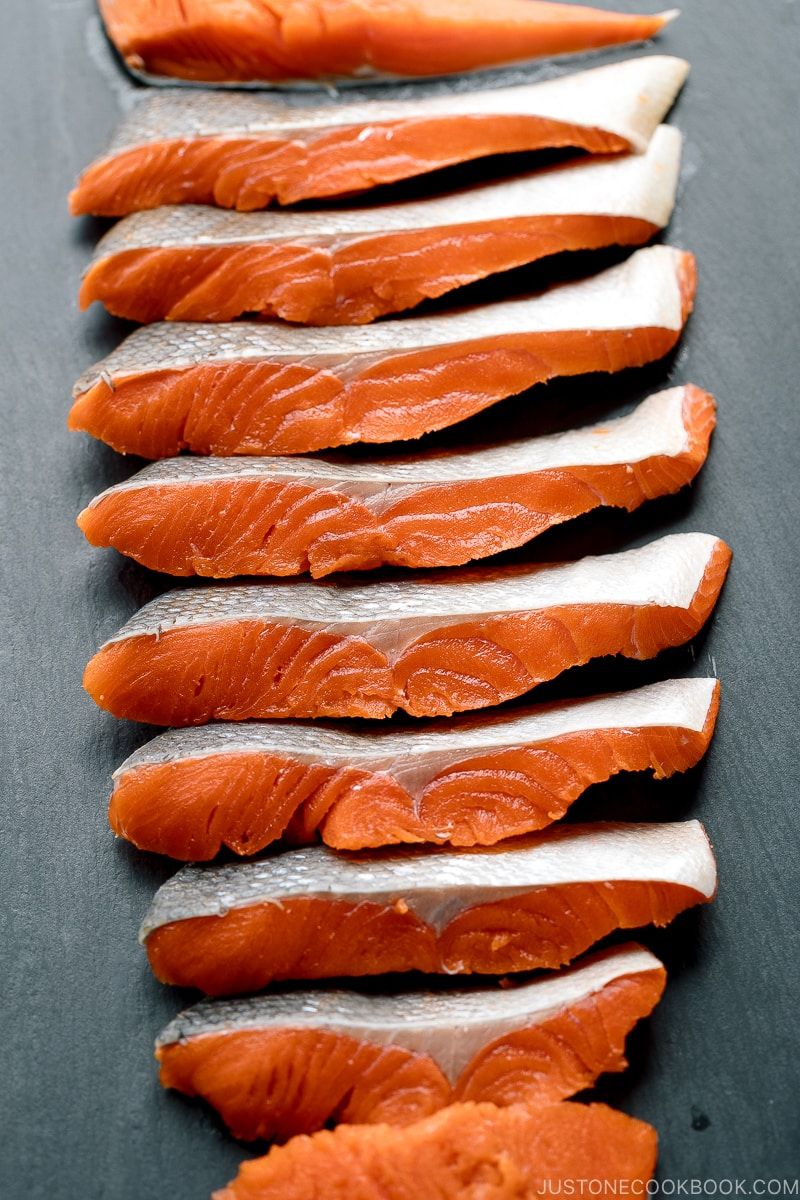
Quality matters tremendously when selecting salmon for your meal. Farmed varieties contain more fat, making them more forgiving when cooking, while wild salmon like sockeye has less fat and requires more careful preparation.
Center-cut fillets provide the most consistent results because they’re evenly thick throughout. When shopping, look for bright, firm flesh with no brown spots or strong fishy smell.
Remember that fresh isn’t always better than frozen—properly flash-frozen salmon often preserves quality better than fish that’s been sitting in a display case for days.
2. Improper Thawing
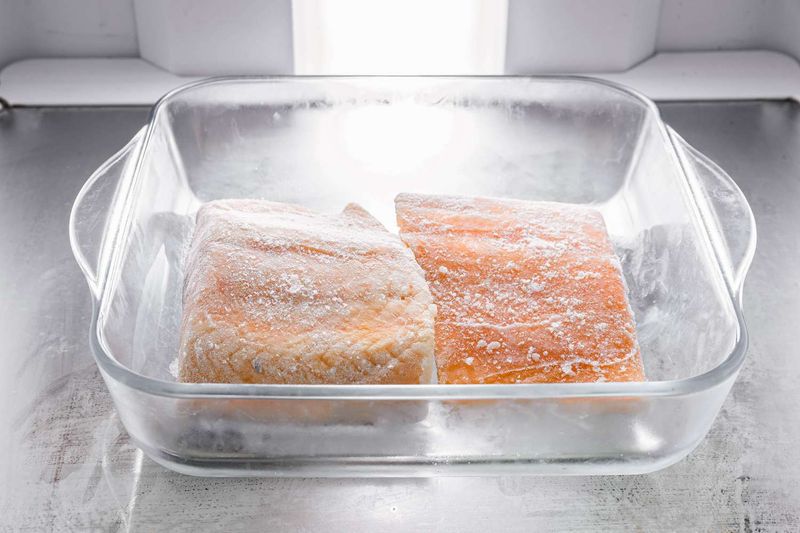
That frozen salmon fillet needs patience, not a warm water bath! Quick-thawing on the counter creates the perfect environment for bacteria while destroying the fish’s delicate texture.
Plan ahead and place frozen salmon in the refrigerator overnight. In a time crunch? Submerge the sealed fish in cold water, changing it every 30 minutes until thawed.
The texture difference between properly and improperly thawed salmon is remarkable—one remains firm and silky, while the rushed version turns mushy and unappetizing. Your dinner guests will definitely notice the difference.
3. Forgetting About Pin Bones
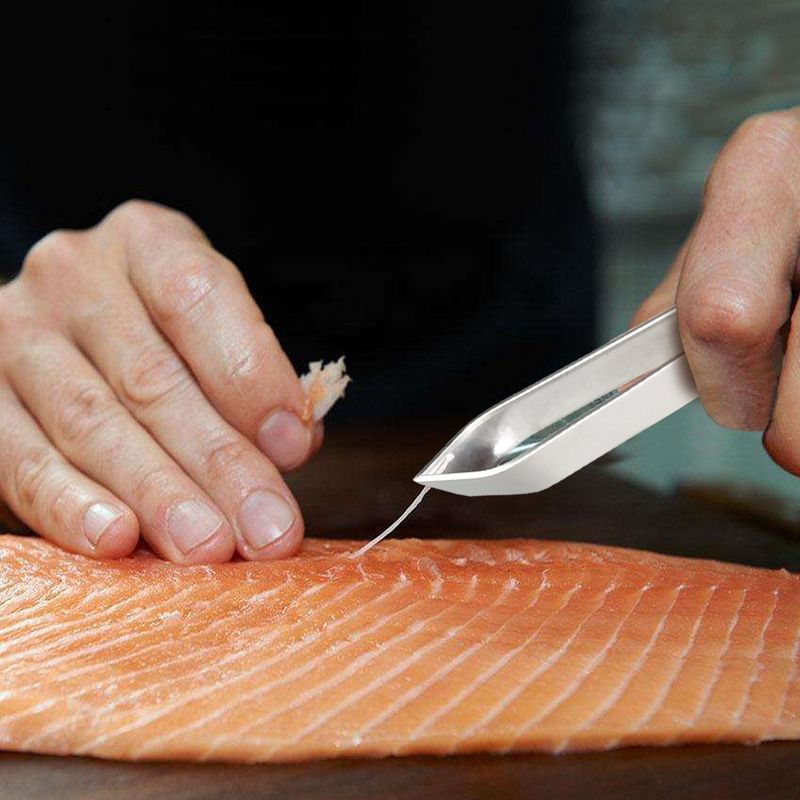
Those tiny, nearly invisible bones can turn a perfect salmon dinner into an unpleasant surprise. Even fillets labeled as boneless often contain these sneaky pin bones that might not be obvious at first glance.
Run your fingertips gently along the flesh before cooking, feeling for the slight protrusions. When you find them, grab a pair of clean tweezers or fish pliers and pull each bone out at the same angle it’s pointing.
This simple five-minute preparation step prevents dinner guests from awkwardly removing bones from their mouths or worse—having one get stuck in someone’s throat!
4. Overhandling the Fish
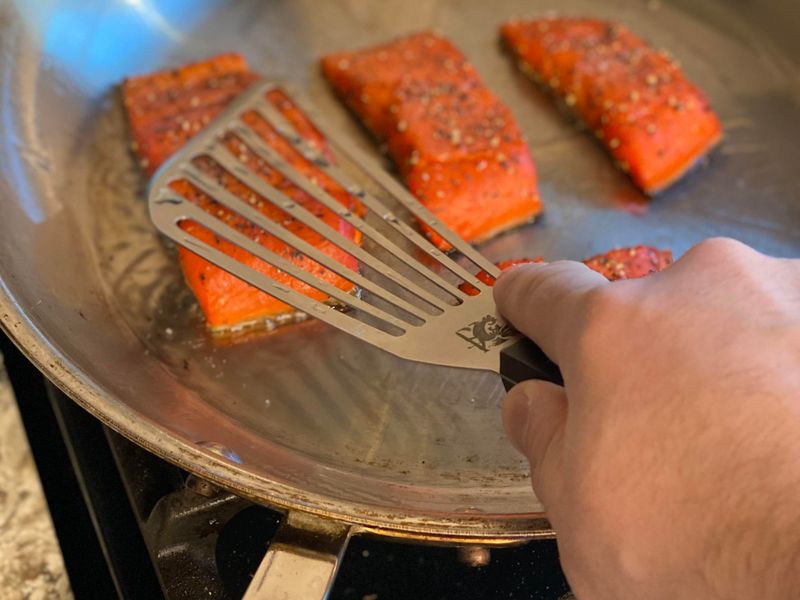
Salmon isn’t a pancake! Constantly flipping, poking, and pressing destroys its delicate structure and squeezes out precious moisture. The more you handle salmon during cooking, the more it falls apart.
Place your seasoned fillet skin-side down in a hot pan and resist the urge to touch it. Let it cook about 75% of the way through before attempting a single, gentle flip to finish the other side briefly.
A fish spatula—wider and thinner than regular spatulas—makes this single flip much easier. Your reward will be a beautiful, intact piece of fish rather than a pile of expensive salmon scramble.
5. Overcooking

Perfectly cooked salmon should flake easily while remaining moist inside. Many cooks ruin their fish by overcooking it until it’s dry and chalky, or undercooking it to a raw, gelatinous texture.
Invest in an instant-read thermometer for foolproof results every time. Remove salmon from heat at 125°F for medium-rare or 145°F for well-done, letting carryover cooking finish the job.
Another visual clue: when tiny white proteins (albumin) start appearing all over the surface, you’ve gone too far. Aim for just a little albumin showing at the sides for perfect doneness.
6. Underseasoning or Overseasoning
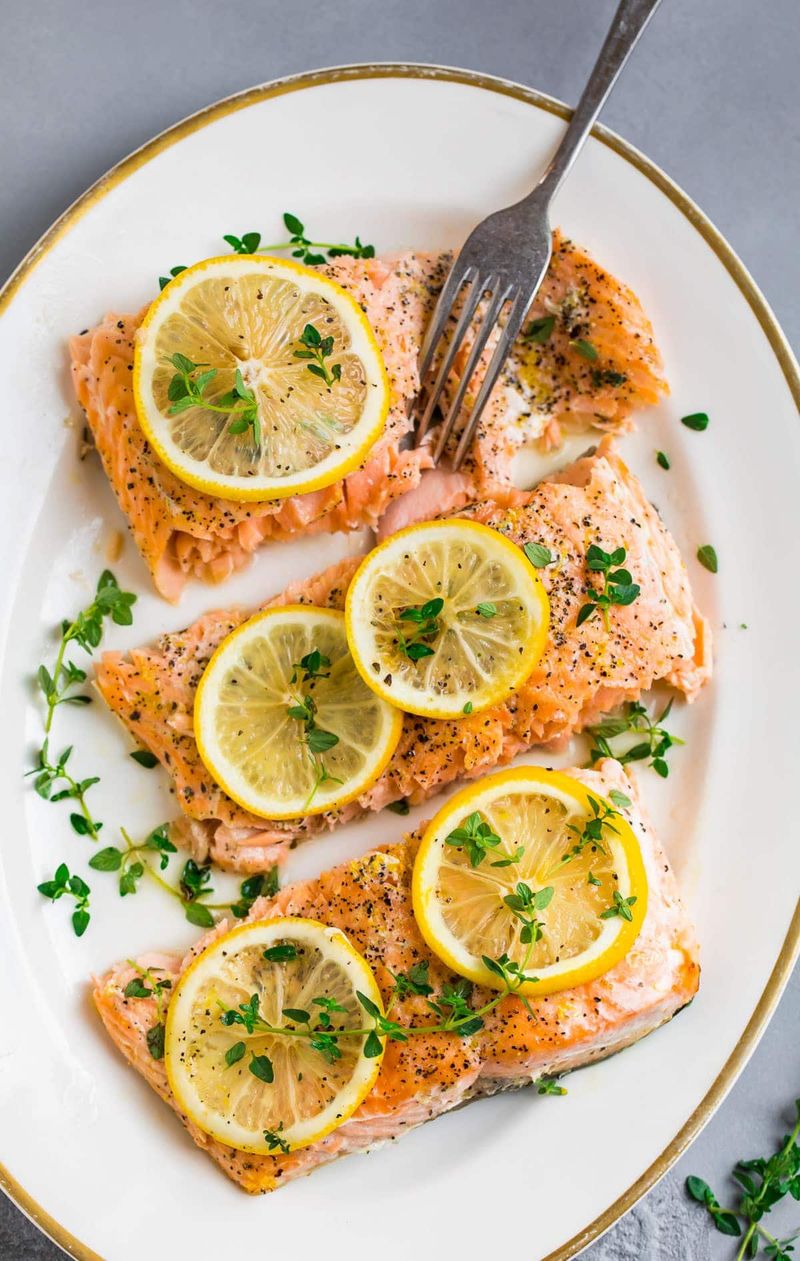
Salmon has a naturally rich flavor that doesn’t need much enhancement. Drowning it in strong spices masks its delicate taste, while using no seasoning at all leaves it flat and uninteresting.
A light touch works wonders—sprinkle with kosher salt and freshly ground pepper about 15 minutes before cooking to draw out moisture and create a flavorful surface.
Add a squeeze of fresh lemon juice or a sprinkle of fresh herbs just before serving. For an effortless flavor boost, try a simple compound butter with lemon zest and dill that melts beautifully over the warm fish.
7. Starting with the Wrong Side Down
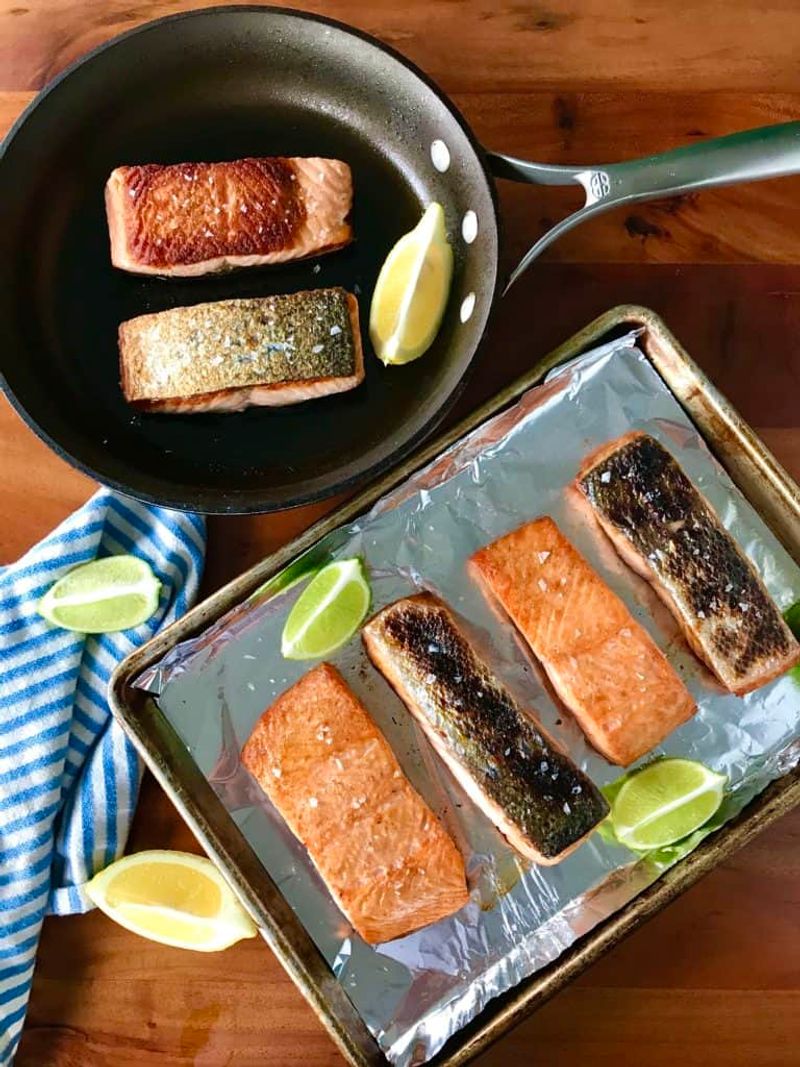
Beginning with the flesh-side down in a hot pan is asking for trouble. The delicate meat sticks, tears, and falls apart when you try to flip it.
Always start skin-side down—the tough skin creates a protective barrier between the fragile flesh and the hot cooking surface. This method also crisps the skin beautifully, creating a textural contrast many salmon lovers crave.
Let the skin cook undisturbed until it releases naturally from the pan, about 4-5 minutes depending on thickness. When it’s ready to flip, it won’t stick, making the turn smooth and keeping your fillet intact.
8. Using Inappropriate Cookware
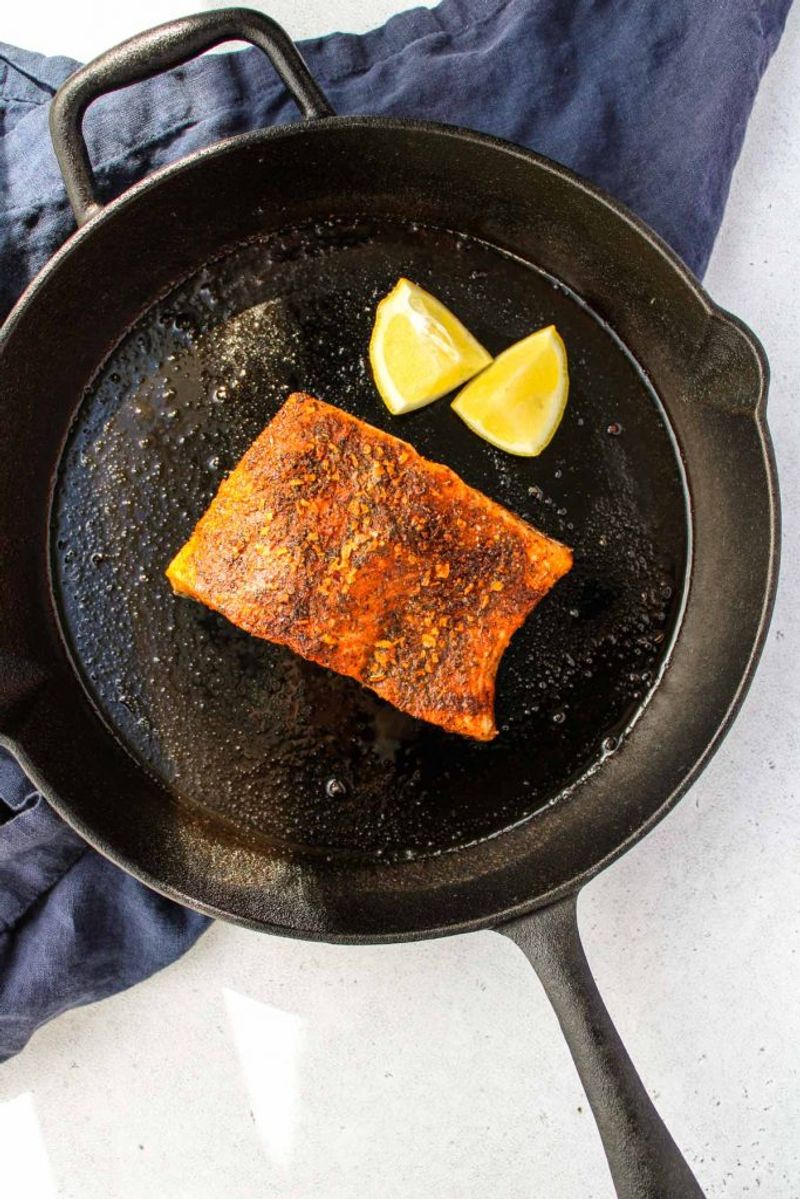
That old, warped aluminum pan isn’t doing your salmon any favors! Using the wrong cookware is a surefire way to end up with stuck-on fish and uneven cooking. Invest in a quality nonstick or well-seasoned cast-iron skillet specifically for fish.
Before adding salmon, heat the pan thoroughly—dropping fish into a cold pan guarantees sticking. A quick test: flick a few drops of water onto the pan surface.
If they sizzle and dance across the surface, you’re ready to add a thin layer of oil and then your fish. Your salmon will release easily when it’s time to flip.
9. Not Letting the Salmon Rest
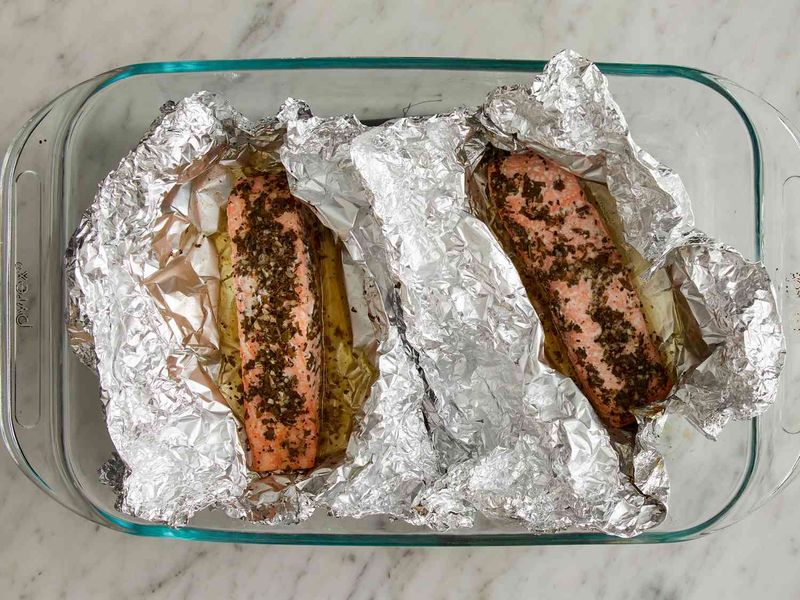
Patience pays off enormously with salmon. Slicing into it straight from the heat causes all those flavorful juices to spill onto your plate instead of redistributing throughout the fish.
After cooking, transfer your salmon to a warm plate and tent it loosely with foil for 3-5 minutes. During this resting period, the fish relaxes, becoming more tender while the temperature evens out from edge to center.
The difference is remarkable—rested salmon maintains its moisture, creating that melt-in-your-mouth texture everyone craves. This simple waiting game elevates your salmon from good to restaurant-quality with zero extra effort.
10. Cranking the Heat Too High
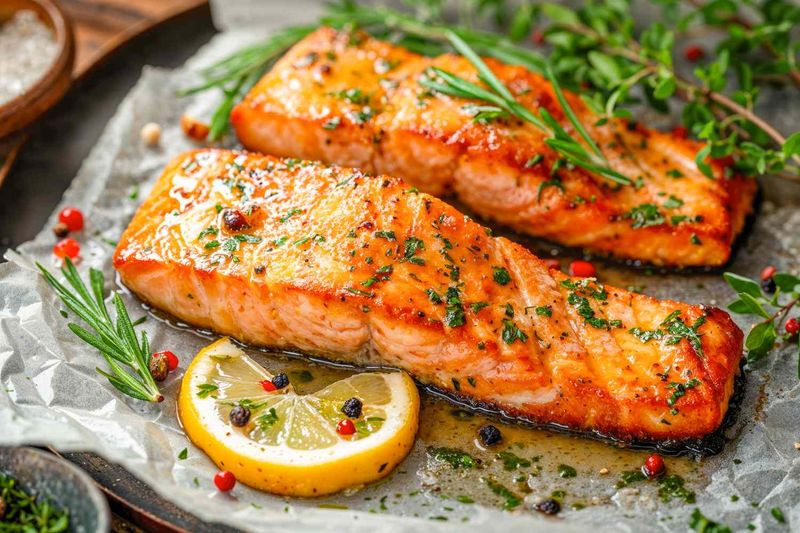
Scorching heat is salmon’s worst enemy. When the temperature is too high, the outside cooks too quickly while the inside remains raw, and white albumin proteins ooze out everywhere, signaling moisture loss.
Medium heat is your friend for most cooking methods. For a 1-inch thick fillet, this means about 4-5 minutes skin-side down, then 2-3 minutes after flipping.
The gentle approach yields evenly cooked salmon with minimal albumin seepage. Your reward is a beautiful presentation and tender, juicy fish that holds its shape when served rather than falling apart into dry, overcooked flakes.
Leave a comment